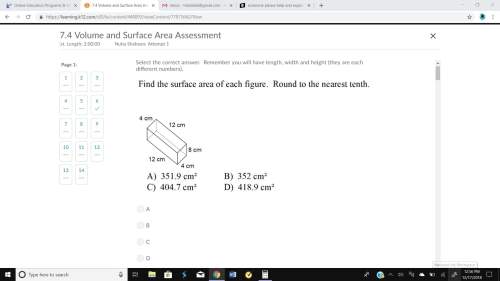14
Select all the correct answers.
Which sequences of transformations applied to shape...

Mathematics, 09.06.2021 06:30, edgytaehyung
14
Select all the correct answers.
Which sequences of transformations applied to shape I prove that shape I is similar to shape II?
a translation 12 units right and 5 units up, and then a dilation by a scale factor of 2
a reflection across the x-axis and then across the y-axis, and then a dilation by a scale factor of 2
a 180° counterclockwise rotation about the origin, and then a dilation by a scale factor of 2
a reflection across the y-axis, and then a dilation by a scale factor of 2
a reflection across the x-axis, and then a dilation by a scale factor of 2

Answers: 1
Other questions on the subject: Mathematics


Mathematics, 22.06.2019 00:50, richard80
Match the following reasons with the statements given to create the proof. 1. do = ob, ao = oc sas 2. doc = aob given 3. triangle cod congruent to triangle aob vertical angles are equal. 4. 1 = 2, ab = dc if two sides = and ||, then a parallelogram. 5. ab||dc if alternate interior angles =, then lines parallel. 6. abcd is a parallelogram cpcte
Answers: 3

Mathematics, 22.06.2019 04:00, michaelhal414
The function below is written in vertex form or intercept form. rewrite them in standard form and show your work. y = (x+4)(x+3)
Answers: 1
Do you know the correct answer?
Questions in other subjects:



Mathematics, 08.06.2021 22:20





Biology, 08.06.2021 22:20


Biology, 08.06.2021 22:20







